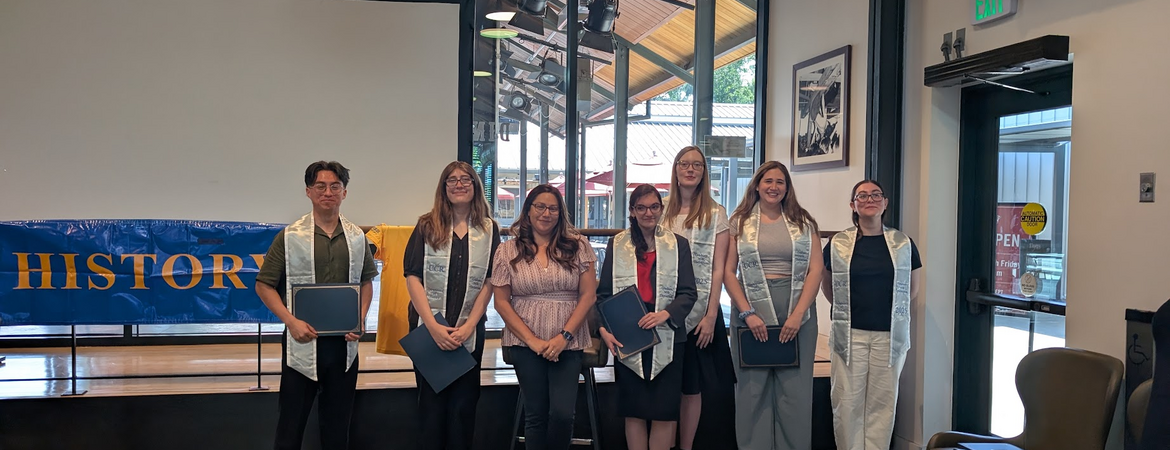
The Department honored 4 undergraduate students at our Spring Banquet who won awards for their research.
Anastasia Manvelyan won the Cornerstone Award for a paper entitled “‘Well! Burn me, or hang me, I will stand in the truth of Christ!’: Defiance in the Salem Witch Trials.” Manvelyan’s essay brought to life a group of headstrong defendants in the Salem Witch Trials of the late seventeenth century. Drawing on a rich trove of records from the time period, it showed that the authority of the court established to prosecute alleged associates of the devil in colonial Massachusetts never went uncontested. Instead, it met with open defiance from several of the accused. Interpreting the witchcraft prosecutions as an effort to preserve the order of the pilgrim colony in a time of crisis, Manvelyan convincingly linked the disorder in the court to the failure of witch hunts’ broader social and symbolic agenda.
Chavah Bernstein is the winner of the Peter Schneider Award. Her paper, “Bridging the Gap: The Disconnect Between Historical Research on the Transatlantic Slave Trade and California K-12 Curriculum,” highlights the growing discrepancies between recent scholarship on the Transatlantic Slave Trade and the way California’s education standards envision the teaching of the subject in public schools. The latter, Bernstein shows, has remained vague and overly focused on the US plantation system at a time when historians emphasize the global nature of the trade, the centrality of the Middle Passage to the institution of slavery, and the agency of enslaved persons. Offering ideas for reconnecting school curricula and academic research, she highlights the potential of world history to breathe new life in students’ civic education.
The winner of the Thomas and Evelyn Gahn Prize is Itzel Mar, author of “Indigenous Women in the Zapatista Rebellion: Challenges and Sacrifices.” Mar’s essay explores the central role of women in the Zapatista rebellion. Zapatistas rose to defend indigenous land and indigenous life against the encroachments of neoliberal trade policies in 1990s Mexico. The iconic masks worn by the movement’s fighters often hid the faces of women, who served the movement in multiple capacities—not only as soldiers but also as community makers, guardians of memory, and stewards of the indigenous economy. Through the use of a diverse range of sources including oral histories, documentary film, and books in native languages women Mar depicts in sensitive ways these women’s double struggle against capitalist exploitation and sexual violence, both within and outside their communities.
The Sterling Stuckey Award went to William Kingsbury for “Survival Pending Revolution.” Kingsbury’s essay reconstructs the community work undertaken by the Black Panther Party in postwar Oakland. Bobby Seale and Huey Newton viewed the revolutionary overthrow of white supremacist rule as the ultimate goal of the movement they founded. Yet the Black Panthers’ main legacy, Kingsbury argues, may well be in the work they accomplished on the way to revolution—the free breakfasts they served to school children, the clinics of the “People’s Health Plan,” where community members were screened for the sickle cell anemia, or the “Liberation schools” where they received a political and historical education. Funded for the most part by local businesses, the Party’s “survival programs” served the double goal of awakening the community’s revolutionary consciousness while defending it against the effects of racial and economic injustice. As Kingsbury suggests, the issues they confronted and the methods they invented are more relevant than ever.